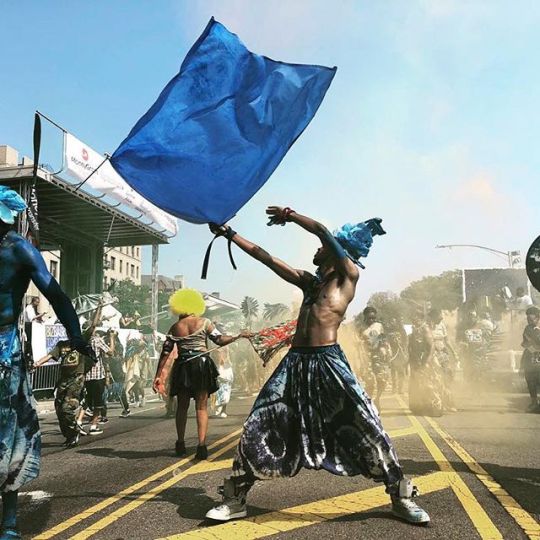Founded in 2010, the Dance & Performance Institute is an international community of dance and performance artists, a forum for exchange, and series of programs on contemporary dance and performance based in Trinidad & Tobago. The Institute is directed and curated by Makeda Thomas, with the support of a growing community of artists, scholars, teachers and network partners.
Don't wanna be here? Send us removal request.
Text
“Embracing the Break”: Institute in LA Review of Books

#EmbracingTheBreak. The LA Review of Books recently published this essay by Taylor Renee Aldridge (visual arts curator and program manager at the California African American Museum). And we are #BEAMING at what she had to write about the work of the Dance and Performance Institute, Trinidad & Tobago. The essay was originally commissioned for SF MoMA’s Open Space, edited by Claudia La Rocco and Gordon Faylor. Taylor writes:
“I can articulate these connections now, but it would not be until I visited Port of Spain, Trinidad and Tobago, to attend the New Waves! Dance and Performance Institute in 2018 that I would witness God’s queerness so fluidly across sites of religious ecstasy and hedonistic abandon. It was during that trip that I realized I could take queerness and my God (in all their forms) with me, wherever I go, without shame or consequence. I’d come to the institute in 2018 intending to observe — a collaborator of mine, a choreographer, was there participating in the daily movement workshops — but my plans to be a passive gawker were immediately thwarted: I was told that observation without participation was not permitted, and deeply “colonial.” The New Waves! founder, Makeda Thomas, has been facilitating the Institute for several years and the space — exclusively dedicated to African and Caribbean futurisms, ancestral spirituality, embodied practices, and most importantly, Black liberation — required collective fellowship in corporeal movement as a central part of its practice and operation.”
Read more here about Taylor’s experience during New Waves! 2018, including about Jean-Sebastien Duvilaire’s powerful workshop and Robert Young’s ‘Dotish Tour’ https://lareviewofbooks.org/article/embracing-the-break/. Let’s Dance!
2 notes
·
View notes
Text
dance and fight: a land cooperative for the future/New Waves! 10th Anniversary Movements. Let’s Dance!
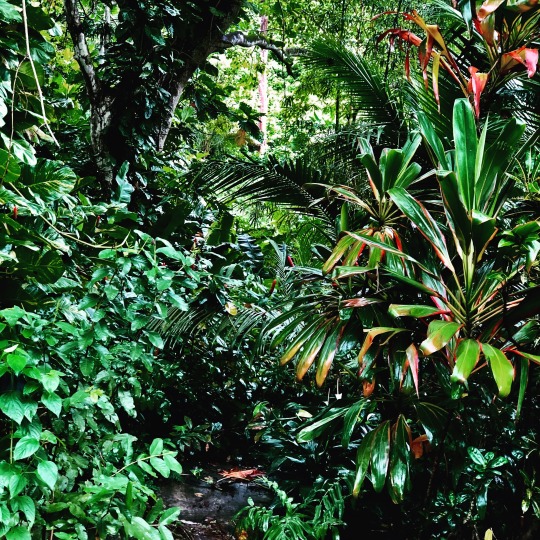
“this revolution of emancipation, the revolution of independence…that did not happen, it is still to happen” - Tony Hall
Greetings from Iere, the island currently known as Trinidad,
For the past 10 years, I have engaged an extraordinary effort to create an institute for dance and performance in Trinidad and Tobago that has involved over 800 dance artists, teachers, scholars, and lovers from around the world, and institutions like the University of the West Indies, University of Trinidad and Tobago, National Council on Indian Culture, members of the Orisa/Ifa community, Movement Research and Dancing While Black in New York, and with the Santa Rosa First People, among many other organizations and individuals. It has been a journey…for which I am ever grateful.
In “Making Stage II: Practicing Upwards”, I wrote about the next decade of the Institute being centered on the meditation of how to practice upwards. That was 6 months ago - before COVID19 transformed our world and before a wave of global uprisings on the matter of Black Lives. At first (as a sort of grudging auto-response), I put together a digital program involving an Archive & Online Exhibit, Zoom masterclass workshops and panels with guest artists in locations in Trinidad & Tobago, Guadeloupe, Jamaica, New York, and Miami; exclusive video releases, Instagram Live performances, and a web mini-series. Mad ting. The New Waves! 2020 10th Anniversary Celebration program was INCREDIBLE, with over 30 invited Guest Artists from throughout the Caribbean and its Diasporas. I so wanted it to go forward.
And then, Tony Hall died. I built an altar that night.
The Dancer’s Prayer:
dance and fight. In “this revolution of emancipation, the revolution of independence…that did not happen, it is still to happen”; in this upside down world, where up is down, practicing upwards means rooting.
Root in the “depth and spirit of contemporary dance and performance practice in the Caribbean and its Diasporas, in an organizing principle of ‘Emancipation’”. Root in connecting “in essential ways that alters and brings out light in one another”. This is how we grow. This is the “light” of the Institute, toward the day we can gather in person:
On this 1 August, Emancipation Day - historically, the close of each New Waves! Institute - we BEGIN this journey to the future. It is with great pleasure that The Dance & Performance Institute announce its LAND COOPERATIVE - a communal purchase of land for farming, art, and healing; a platform of intentionality; a performance of resistance to white supremacist capitalist patriarchy; the building of a legacy of leaving land for the arts. A praxis of collective liberation and a space of empowerment, creativity and critical thinking. A future for Black, Indigenous, and Artists of Color in the Caribbean. Grown in Indigenous philosophies of land and community development in a local Caribbean-based economy, the Land Cooperative offers artists investment in land, and through shared responsibility, financial gain from income the land provides. The Life, Spirit and Culture of the Institute is clear in this moment/movement.
I invite you to join me as a Founding Member of the Land Cooperative. Let's Dance!
0 notes
Photo
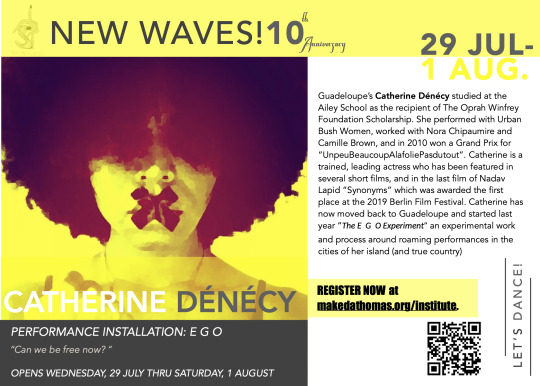
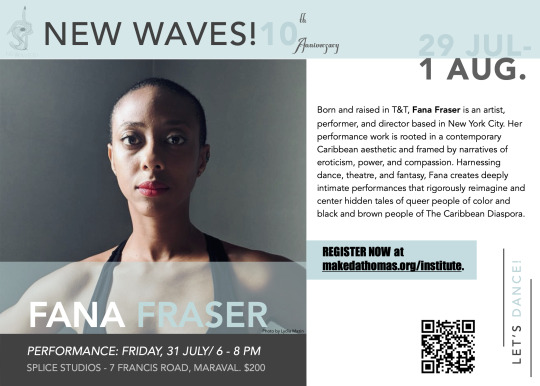
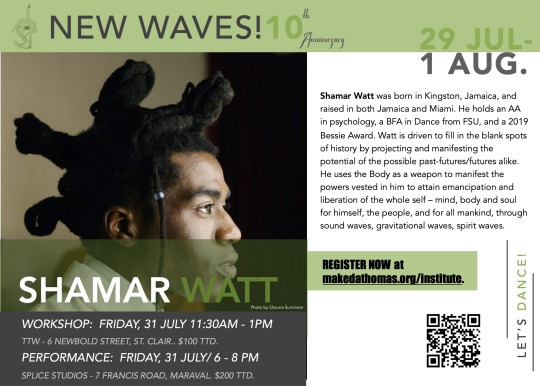
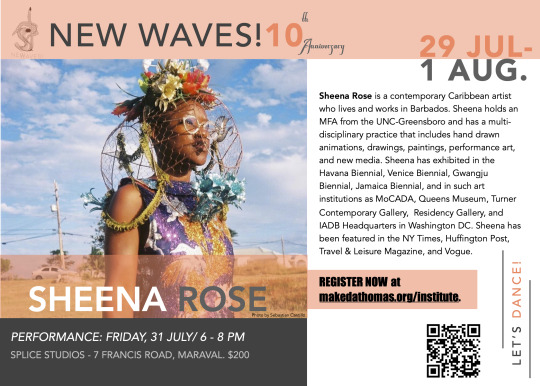
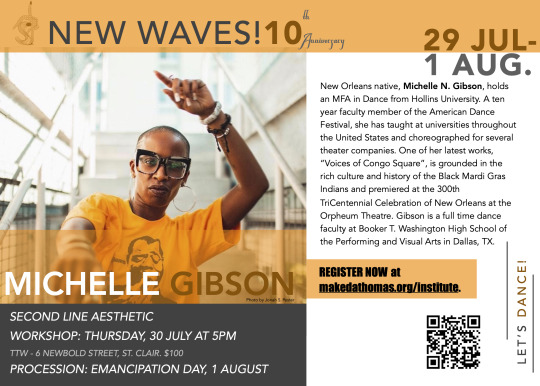
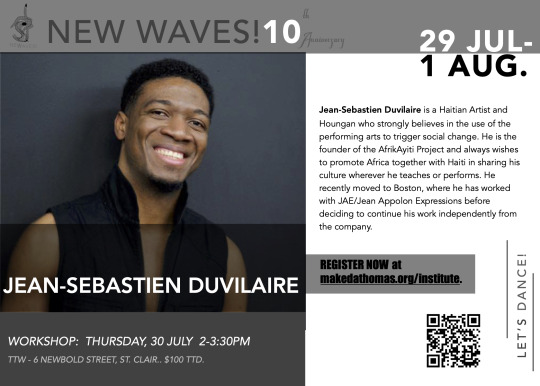
The Dance & Performance Institute celebrates its 10th Anniversary with New Waves! 2020 from 29 July to 1 August in Port of Spain, Trinidad. REGISTER NOW at https://form.jotform.co/93291810944865. The participation fee is $500 USD for Internationals and $1000 TTD for CARICOM, which includes all program events, workshops, and local transportation. Let’s Dance!
2 notes
·
View notes
Text
Belmont Baby Dolls Presents “Spirit Dolls” for 2020 Carnival in Trinidad & Tobago
“A girl’s doll is herself"
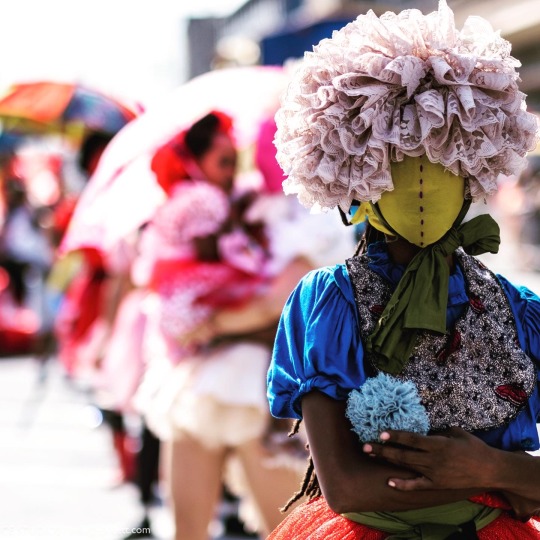
Presented for “Fluid Black::Dance Back”, the 4th Collegium for African Diasporic Dance Conference at the Rubenstein Arts Center at Duke University, 21 February 2020.
I join you all here at CADD in the middle of Carnival in Trinidad, where I am producing a Carnival band - Belmont Baby Dolls. For 2020 Carnival, Belmont Baby Dolls collaborates with visual artist, Brianna McCarthy, to present “Spirit Dolls”. “Spirit Dolls” sets its foundation on the traditional elements of the Baby Doll Mas: Baby Doll Dress, Bloomers/Pettipant/Frilly Panty, Bonnet (covered face)/Tiny Top Hat/Big Bow, Parasol/Stick/Weapon, Stockings/Frilly Socks. Materials are a mix of African textiles, European lace, and fabrics commonly found in Caribbean homes - florals and cotton prints. In this way, we are interested in a “Caribbean” Doll, with all those respective cultural influences, and moving towards something that is truly unique; self-defined. And while the aesthetic is strong, this mas is less about what a Baby Doll looks like, and more about what Baby Doll mas can do.
Spirit dolls act as vessels for beings of powerful spirits - Divine-beings, a spirit-of-divination, spirits of the dead, familiar-spirits, and even spiritual entities which have never had an earthly incarnation. Spirit dolls hold intention - for reasons that can include healing, honoring ancestors, divine connection, and expressing love. These types of dolls are often found on altars where they are objects of devotion - petitioned with offerings such as water, candy, cigarettes, coffee, etc. - to invoke their power in the life of the individual. The making of the Spirit Doll is a deeply personal ritual to bring to form a part of yourself that is emerging from your unconscious. Carnival, is the performance ritual to invoke the spirit of the Doll; to open a path to the impossible.
Keep reading
2 notes
·
View notes
Photo
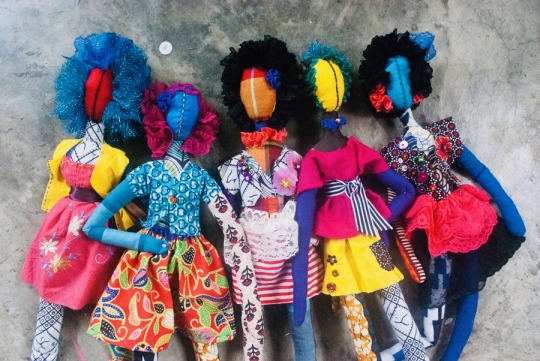
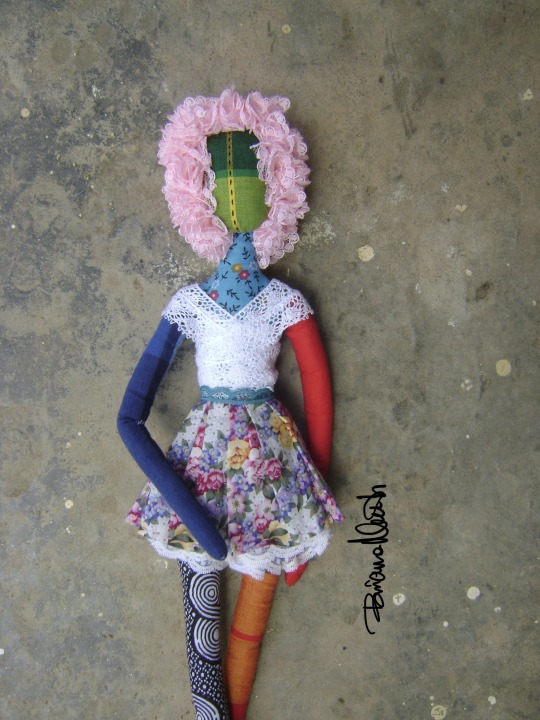
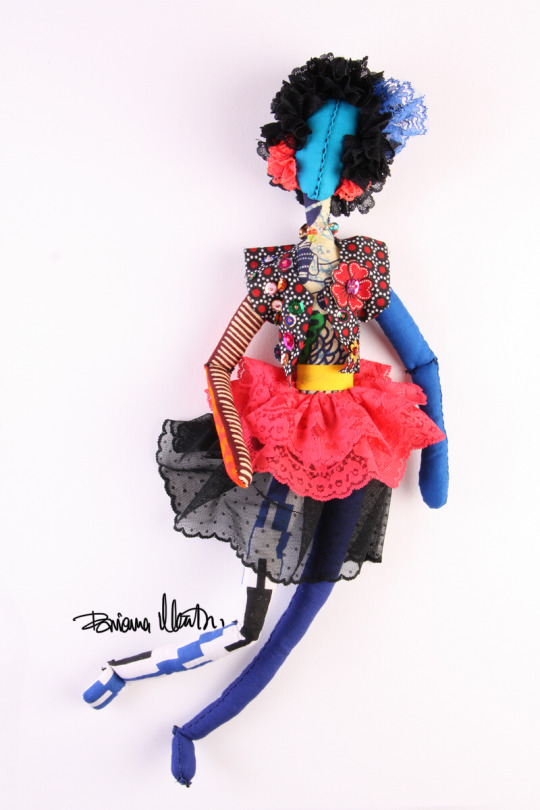
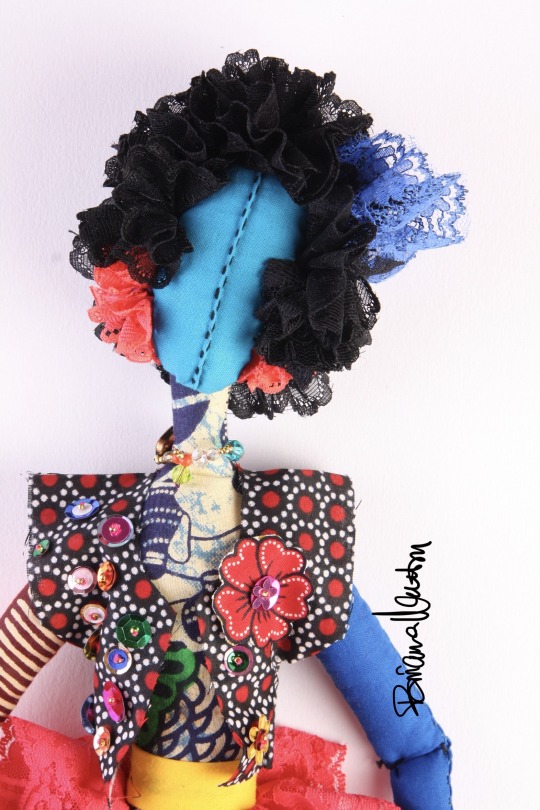
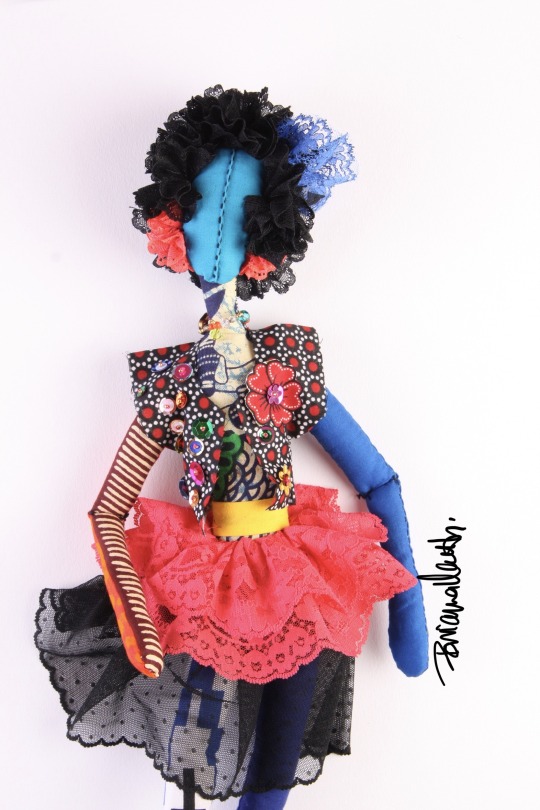
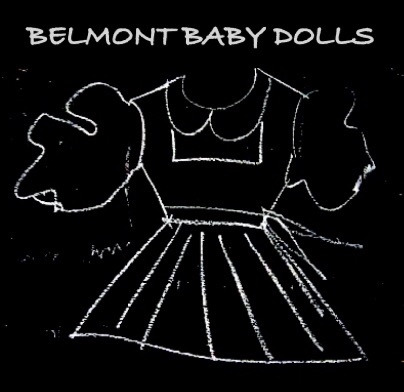
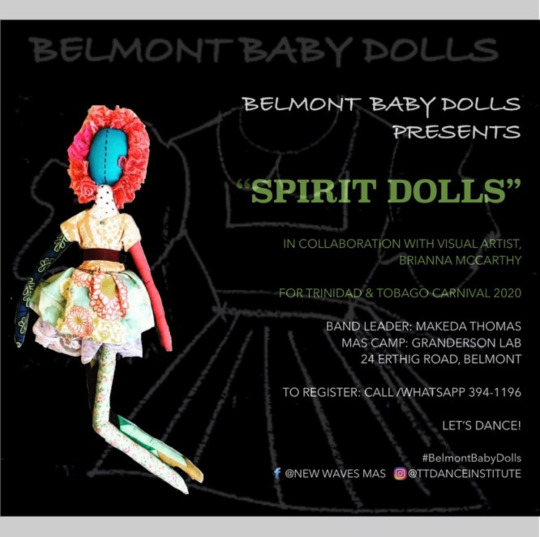
“a girl’s doll is herself”
For 2020 Carnival, #BelmontBabyDolls collaborates with visual artist, Brianna McCarthy, to present “Spirit Dolls”. “Spirit Dolls” sets its foundation on the traditional elements of the Baby Doll Mas. Materials are a mix of authentic African textiles, European lace, and fabrics commonly found in Caribbean homes - florals and cotton prints. In this way, we are interested in a “Caribbean” Doll, with all those respective cultural influences, and moving towards something that is truly unique; self-defined. And while the aesthetic is strong, this mas is less about what a Baby Doll looks like, and more about what Baby Doll mas can DO.
Spirit dolls act as vessels for beings of powerful spirits - spirits of the dead, familiar-spirits, Divine-beings, a spirit-of-divination, and even spiritual entities which have never had an earthly incarnation. Spirit dolls hold intention - for reasons that can include healing, honoring ancestors, divine connection, and expressing love. These types of dolls are often found on altars where they are objects of devotion - petitioned with offerings such as water, candy, cigarettes, coffee, etc. - to invoke their power in the life of the individual. The making of the Spirit Doll is a deeply personal ritual to bring to form a part of oneself that is emerging from the unconscious. Carnival, is the performance ritual to invoke the spirit of the Doll; to open a path to the impossible.
Performers are invited to play a central role in the development of the mas. With Belmont Baby Doll 2020 artist collaborator, Brianna McCarthy, performers will create their baby doll - imbued with their personal intentions - and base their own costumes on that doll.
“Embodied practice is a state of reality that can allow us to dis-embody to the state of spirit.”
To REGISTER, call/WhatsApp 394-1196 or email [email protected].
Let’s Dance!
1 note
·
View note
Text
Making Stage II: Practicing Upwards
10 years ago, with a pregnant belly, I welcomed the first artist to the Institute. Forward to today, with The Dance and Performance Institute having engaged over 800 artists from around the world through its programs: the founding Artist-in-Residence Program has hosted over 30 international artists and scholars; the annual New Waves! gathering in Trinidad & Tobago (in 2014, the program travelled to Haiti); a Carnival Performance Studies program that grew into New Waves! Mas - which produced for Trinidad Carnival (2019) and Brooklyn’s West Indian American Day Carnival (2017, 2018); and a Scholarship Program offering dance studies to local artists in Trinidad & Tobago, and for Caribbean artists in the diaspora to study dance with leading institutions, artists and scholars in NYC. In 2018, “Making Stage: Dance Curation in Trinidad & Tobago” was published in “Curating Live Arts: Critical Perspectives, Essays, and Conversations on Theory and Practice”, documenting the New Waves! Commission Project. This is the season to take great pleasure in all this activity; this labor. Adrienne Marie brown’s “Emergent Strategies” affirms (and has offered new tools for) many of the practices we’ve engaged as a community over the years. It reminds me to also celebrate and give space for the smaller grand gestures - the E-susu Program, which saw four rounds, allowing artists to fund projects, pay bills, and save; the Malcom Fellowship for the Arts, which has funded all local artist residencies; the many acts by many individuals throughout Trinidad & Tobago who’ve supported the Institute with their presence and support. To celebrate is the birthright of the Institute - to mark 10 years of important work by independent artists for dance and performance artists in and of the Caribbean and its Diasporas.
The Ways. We have built a [strong: agile, networked] community, in which programs have intersected in beautiful and surprising ways: Artist Residencies have been held concurrently with and incorporated into New Waves!; New Waves! participants have returned as Artists-in-Residence, and vice versa; many from each group, and also Faculty, have played for Carnival with New Waves! Mas; Scholars-in-Residence have served as mentors for scholarship recipients; Institutional Partners have initiated Scholarship Programs. We’ve partnered and/or collaborated with over 30 Caribbean-based organizations including the University of Trinidad & Tobago/Academy for Performing Arts (a main partner for New Waves! Institute for 8 years), University of the West Indies, the National Council on Indian Culture, Alliance Francaise, Jouvay Ayiti, and when in Haiti, with Haiti Cultural Exchange, FOSAJ, and Exadans, among others. In NYC, the Institute partnered with Movement Research and Dancing While Black - both powerhouse organizations - to forward our conversation about Diasporic Dance. New Waves! participants have become Staff; and Guest Artists will become Board Members, as will be announced during New Waves! 2020.
What the Institute has done over the last decade, is create space and a community of intellectual and imaginative inquiry for hundreds of dance artists and scholars of the Caribbean and its Diasporas. Placed within the multiplicity of the Caribbean historical and cultural context - in an organizing principle of ‘Emancipation’ - the Institute has served as a site of creativity, experimentation, and critical thought about contemporary art-making processes inextricably linked to community: how the understanding and formation of sustainable community for the Caribbean and its global diaspora may be supported by art practice, curating and organization. As we look forward to the next decade, we center on the meditation of how to practice upwards.
For New Waves! 2020, more than 30 Guest Artists are invited to invoke a practice that includes dance, song, word, and play; to create a space where “dancers could dance and be healed from the laborious hierarchies of imperialism and colonization; a space where we could “each re-strategize our own personal vision”. Through four days of performance, movement and reasoning sessions, screenings, communal meals, and informal limes, New Waves! 2020 will explore how dance artists, scholars, teachers, administrators, those in dance production (lighting and costume designers, musicians), and other leaders in the field of dance galvanize, play, workshop, commune, disrupt, engage, celebrate, mourn, heal, and move. Our vision is to embody the depth and spirit of contemporary dance and performance practice in the Caribbean and its Diasporas - in an organizing principle of ‘Emancipation’ - and connect in essential ways that alters and brings out light in one another.
New Waves! 2020 is full of light. Independent of the academy, New Waves! 2020 will be held through a village of creative spaces throughout Port of Spain - including Splice Studios, Trinidad Theatre Workshop, and LOFTT Gallery. Guest Artists include: Catherine Denecy with a performance installation, E G O that will run the course of New Waves! 2020; Dr. Ras Mikey C, who will lead a workshop in Ethio-Modern Dance; Adam Ade Ola, will lead Ori Bata and Jean-Sebastian Duvilaire, Haitian Dance (both engage live singers and drummers); Rennie Harris, with House Dance, featuring a live DJ; Michelle Gibson, with Second Line Aesthetic, which returns to New Waves! in a special iteration for the Emancipation Day Procession; and a Ronald K. Brown/EVIDENCE workshop in Contemporary Dance, taught by Arcell Cabuag. New Surfers include Jamie Philbert, with Kalinda Technique, Shamar Watt, who will lead a workshop Contemporary Dance and perform along with another new surfer, NIC Kay, on a program that includes Sheena Rose, Akuzuru, Fana Fraser, Neila Ebanks, and new work by Sonja Dumas’ Continuum Dance Project. Three films will be screened in a separate program: Millicent Johnnie returns to New Waves! with La Diablesse and Bamboula is Not Bamboozled, and Maya Cozier will screen She Paradise. And finally, the Pearl Primus Archive Project returns to New Waves! 2020. Full of light.
New Waves! 2020 kicks off with an Open House on Wednesday, 29 July at 7pm at Splice Studios, located at 7 Francis Road in Maraval.
Let’s Dance!
0 notes
Text
“The return of the baby doll”. New Waves! MAS Belmont Baby Dolls featured in Caribbean Beat Magazine

The return of the baby doll: https://www.caribbean-beat.com/issue-161/the-return-of-the-baby-doll-backstory#axzz6A46CXtR4
The Belmont Baby Dolls mas band, which made its debut during Carnival 2019, is a project of New Waves! MAS, which is a programme of the Dance & Performance Institute, founded by Makeda Thomas. New Waves! MAS made its inaugural Carnival presentation at Brooklyn’s West Indian American Day Carnival in 2017 with Whitewash, and presented Blue Blue in 2018. Belmont Baby Dolls was its first presentation for Trinidad Carnival.
With fewer than a dozen masqueraders, the band was based in the east Port of Spain neighbourhood of Belmont, a stronghold of traditional mas performance. For their 2019 presentation, Carnival Baby, the Belmont Baby Dolls collaborated with Berlin-based Trinidadian-Canadian artist Shannon Lewis.
The Belmont Baby Dolls’ 2020 presentation, Spirit Dolls, is a collaboration with Trinidadian artist Brianna McCarthy. As the band explains, “Materials are a mix of authentic African textiles, European lace, and fabrics commonly found in Caribbean homes — florals and cotton prints. In this way, we are interested in a ‘Caribbean’ Doll, with all those respective cultural influences, and moving towards something that is truly unique; self-defined. And while the aesthetic is strong, this mas is less about what a Baby Doll looks like, and more about what Baby Doll mas can do.
“Spirit Dolls act as vessels for beings of powerful spirits — spirits of the dead, familiar-spirits, Divine-beings, a spirit-of-divination, and even spiritual entities which have never had an earthly incarnation. Spirit dolls hold intention — for reasons that can include healing, honouring ancestors, divine connection, and expressing love . . . The making of the Spirit Doll is a deeply personal ritual to bring to form a part of oneself that is emerging from the unconscious. Carnival is the performance ritual to invoke the spirit of the Doll; to open a path to the impossible.”
For more information, contact New Waves! MAS at www.facebook.com/newwavesmas.
0 notes
Text
Dance & Performance Institute celebrates 10th Anniversary with New Waves! 2020 from 29 July to 1 August in Port of Spain, Trinidad
Makeda Thomas, a dance artist whose artistic practice, scholarship and teaching are situated at the intersection of performance practice, diaspora theory, dance studies, ethnography and black feminisms, hosts the 10th Anniversary of the Dance & Performance Institute with New Waves! 2020 from 29 July to 1 August in Port of Spain, Trinidad.
New Waves! Institute has engaged over 800 artists from around the world through its programs: an annual gathering hosted in Trinidad & Tobago since 2011 (in 2014, the program travelled to Haiti); a carnival performance program that grew into New Waves! Mas - which produced for Trinidad Carnival (2019) and Brooklyn’s West Indian American Day Carnival (2017, 2018); and a scholarship program offering dance studies to local artists in Trinidad & Tobago, and for Caribbean artists in the diaspora to study dance with leading institutions, artists and scholars in New York City. The Institute’s founding artist-in-residence program has hosted over 30 international artists and scholars. And in 2018, “Making Stage: Dance Curation in Trinidad & Tobago” was published in “Curating Live Arts: Critical Perspectives, Essays, and Conversations on Theory and Practice”, documenting the New Waves! Commission Project. To celebrate is the birthright of the Institute - to mark 10 years of important work by independent artists for dance and performance artists in and of the Caribbean and its Diasporas.
With a consistent flow of impressive cohorts each year, many have been invited to return for New Waves! 2020.* More than 30 guest artists are invited to invoke a practice that includes dance, song, word, and play; to create a space where “dancers could dance and be healed from the laborious hierarchies of imperialism and colonization; a space where we could “each re-strategize our own personal vision”. Through four days of performance, movement and reasoning sessions, screenings, communal meals, and informal limes, New Waves! 2020 will explore how dance artists, scholars, teachers, administrators, those in dance production (lighting and costume designers, musicians), and other leaders in the field of dance galvanize, play, workshop, commune, disrupt, engage, celebrate, mourn, heal, and move. Our vision is to embody the depth and spirit of contemporary dance and performance practice in the Caribbean and its Diasporas - in an organizing principle of ‘Emancipation’ - and connect in essential ways that alters and brings out light in one another.
Major program highlights for New Waves! 2020 include: an Opening Celebration in collaboration with Guest Artists; a two-day exploration through a series of solo performances, workshops, film, installation, and movement sessions; and a special Emancipation Day presentation.
See Full Program Information for New Waves! 2020 here.
To join us for New Waves! 2020, apply online now at https://form.jotform.co/93291810944865. The particiation fee is $500 USD, which includes all program events, workshops, and local transportation. Let's Dance!
0 notes
Photo

Belmont Baby Dolls. “Carnival Baby”. Photographed by Arnaldo James. Carnival Tuesday, Port of Spain, Trinidad, 2019. See more photos at Instagram: ttdanceinstitute. Let’s Dance!
We invoke the jamettes, the women of Storyville; those women who for themselves define their womanhood, motherhood, and sexuality. And we reject the idea that if we are all of those things, we are not precious.
For its first Carnival presentation in Trinidad & Tobago, the Belmont Baby Dolls presents “Carnival Baby” - twelve MASterful performers whose work “traces the roots of this Mas as one in which women assert control over their sexuality, their womanhood, their motherhood; to assert their “performative identities” against interpretations that would deny both their agency and their pleasure”. (Vaz-Deville)
We invited Masqueraders who extend this Baby Doll ethos throughout their lives. This is an embodied practice; an opportunity to examine how gender and race have shaped and continue to shape this ritual, to explore sexuality in the lives of Caribbean girls and transgressive sexuality performed publicly by women, and the way the tradition helps to revitalize spirits. We are the dolls, their mothers, their sisters, their aunts, their lovers…
This Baby Doll Mas is precious - white cottons, lace, pink ribbon.
Performance Notes:
…to situate the Baby Dolls in historical context and tease out the layers of meaning in their history as well as contemporary practices…ultimately, it was their performance in public space that cemented their place as carnivalesque icons…In watching and participating in these performances, black girls learned movements that might counteract the painful geographic lessons that they also learned each day.
…they defied Jim Crow’s “geographies of pain” as delineated by LaKisha Simmons; Jessica Marie Johnson outlines how during the 18th and 19th centuries, free and enslaved women played a vital role in New Orleans’ commerce and cultural development; Violet Harrington Bryan discusses color or shade; and Jennifer Atkins’ “From Bamboula to the Baby Dolls: Improvisation, Agency, and African American Dancing in New Orleans” places Baby doll performance in the context of dance so that we have history of (women) writers who’ve traced the history roots of this Mas as one in which women assert control over their sexuality, their womanhood, their motherhood; to assert their “performative identities” against interpretations that would deny both their agency and their pleasure…Blues singer Bessie smith wrote and performed “Baby Doll” not only to “get her loving all the time” but to “ease her mind”.
The desire to be special to someone, in fact to be treated like a baby doll, [is] pervasive one for women left to their own devices to survive.
…Baby Dolls flaunted every norm of respectability by smoking cigars and lighting them with money they had tucked in their garters, dancing in the streets to bawdy rhythms, and the shameless claiming of the spotlight wherever they traveled…
New Waves! Mas gives thanks Big LOVE to all who've supported this journey. Made us feel #SPECIAL: Jade Drakes, Amanda T. McIntyre, Sophie Bufton, Paula Obe, Michael Guy-James, Paula Lindo, Melanie Archer, Rubadiri Victor, Tillah Willah, Peter Doig, Robert Anthony Young, Gerry Anthony, Arnaldo JJ, Mark Wilson, Gia Hum Lee, Abigail Hadeed, Kevin Browne, Ms. Gwen from Morvant, and the best grandparents ever - Lynette & Garvin Thomas.
#Trinidad#Carnival#Mas#PerformanceArt#Dance#Theatre#embodied practice#caribbean#Culture#IssaSnack#OneBigGirlsTeam#JudgementStage#Make A Stage
1 note
·
View note
Text
Looking beneath the surface of traditional mas
Looking beneath the surface of traditional mas by Paula Lindo for The Trinidad Guardian. 22 March 2019. Photography by Abigail Hadeed/Splice Studios.
The mas presentation Belmont Baby Dolls, conceived by choreographer and designer Makeda Thomas, was an attempt to reinterpret the Baby Doll mas in a way that subverts the usual presentation. The small band performed on the road on Carnival Monday and Tuesday.
Thomas said her main inspiration for creating the band was seeing how the world was responding to her two-year-old girl child. “My daughter has always been my Carnival baby,” she said. “She was born on Carnival Saturday in 2017. Most recently she’s taken to walking around with a little brown baby doll and it hit me one morning that the thing I’m thinking about the most was girls and women and our relationship, not only to the patriarchy that determines so much of the quality of our lives but also how we love up on one another, so my relationship to my sistren, my dear girlfriends, my sisters, my daughter, my mother, to other women in my lives and so this felt like the truest mas to play and to think about some of those things. It’s a mas that allows us to look at what it means to be woman and female, and perhaps challenge that.”
Thomas said the way the mas is traditionally played is important. “It’s about a mother who is trying to hold someone accountable for a child, and can be played very pitifully, and I’ve seen our reaction to that type of performance be very disdainful.
There’s a lack of agency and deep critical thinking in thinking about what’s happening in that moment. It’s still brilliant and it still allows us to look at things like race, class and gender at the same time in the way that it is performed, but I hoped to imbue this with more space for agency on the part of the performer in a way for the mas to connect to their real lives, so it’s not a parody, it’s not funny, so we can talk about what this mas means.”
Thomas said she looked at sources both within the Caribbean and in the diaspora in researching the mas.
“Like most traditional mas, it was most historically played by men, but contemporary artists like Hazel Brown, Michelle Isava and Stephanie Leitch have played Baby Doll mas over the years. New Orleans has a strong Baby Doll tradition that goes alongside T&T’s in its creation and development, including being mostly played by men.
Then somewhere around the 1920s, 1930s, it became played by more mothers, black women who, instead of it being a “begging mas”, it was about showing independence where you could afford to take care of yourself and your child and you didn’t have to look for the father, because it did not matter, so there was a way that I was trying to have a conversation in between all of those performance traditions.
“In New Orleans, it’s also aligned to black female sexual freedom, these women were able to choose their partners, they had sugar daddies, hence the name Baby Dolls, so there’s also that connotation to it. So I’m invoking the traditional performativities of this mas, but also reaching out to the diaspora for other influences.”
The band also collaborated with Shannon Lewis, a Berlin and Toronto-based artist who was recently in residence at Alice Yard, using her long silk prints as their banners. Thomas said it was important that the band be situated within Belmont. “We want this idea that we are strong and come from legacies that may require lots of healing but yet still we should feel our importance, we are valued, we are fragile, we deserve to be taken care of. It’s about providing a visual representation of this lovely little delicate brown baby doll. It’s amazing the reaction people, even young children, have when they see Nyah with a doll that looks like her. Just the image is important, seeing a brown baby doll in a fragile soft beautiful way is important for young girls.
We hope that our performance then, which should be free and using tools like improvisation to demonstrate that freedom and the choices that you can find within that, that little girls watching us negotiate our relationships with our partners and with other men and women in our lives, that they then learn some of the tools for survival that we have learned.”
Thomas said even though the mas costumes are made of delicate materials, “it’s a bit too beautiful and we need some grotesque and so we’re adding things like skulls and heavy black bows, and we’re finding lots of other things to put in there, so you go how beautiful and oh how delicate and then you notice this, and there’s clearly something deeper going on there, if I look a bit deeper, what’s underneath this beauty, and that there’s more that we’re saying.”
0 notes
Text
INDEPENDENT MAS SPEAKS: BELMONT BABY DOLLS
Rhizomes are roots which change their structures to adapt to their environment. The origin comes from the Greek word which means “mass of roots”, or as I’ll call it, “Roots Mas”. Rhizomes are of the underground; the underbelly. Fractals - ubiquitous in nature - are infinite, self-similar, iterated, and detailed mathematical constructs. Fractals are useful in describing processes in time - particularly, chaos theory or, for this purpose, a Carnival. So, I begin with these most ancient and futuristic of technologies as a way to not only think through the irrepressible nature; posterity, depth and complexity of Carnival and its performativities, but in theorizing a “diasporic imaginary” of its future. As Kevin Browne wrote, “consider the possibility that the internalization of folklore epistemologies is not a haunting, but an exercise in/expression of supernatural intentionality.”
- Notes from “Fractal at the Surface, Rhizomatic At The Root” by Makeda Thomas, Belmont Baby Dolls Band Leader at “Independent Mas Speaks” with Wendell Manwarren (3Canal), Andrew Patrick (Black Indians-Warriors of Huracan), Donna Dove(Phagwa Mas), and Robert Young (Vulgar Fraction). Tuesday, 19 March 2019 at 24 Erthig Road, Port of Spain.
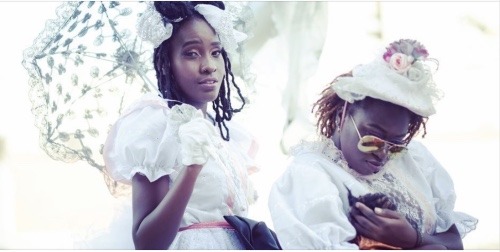
Looking beneath the surface of traditional mas by Paula Lindo for The Trinidad Guardian. 22 March 2019. Photography by Abigail Hadeed/Splice Studios.
0 notes
Photo
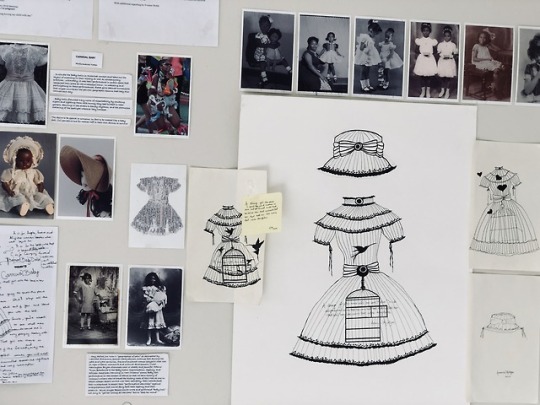
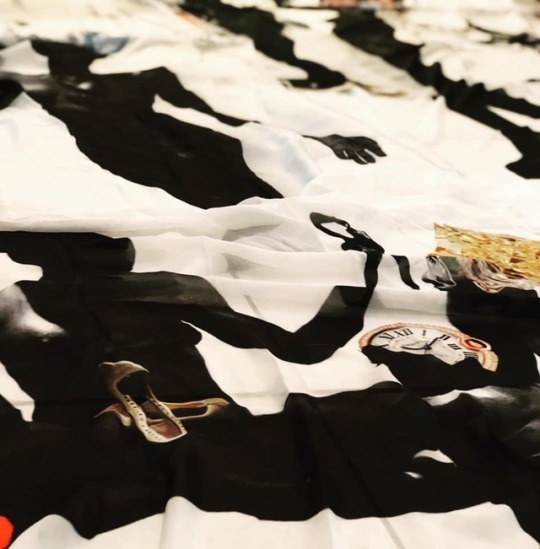
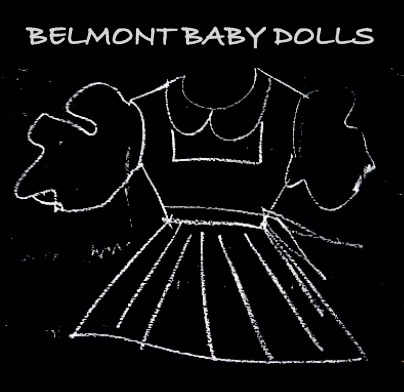
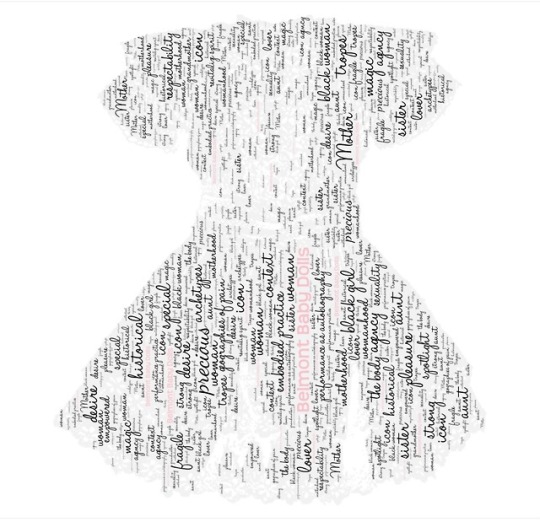
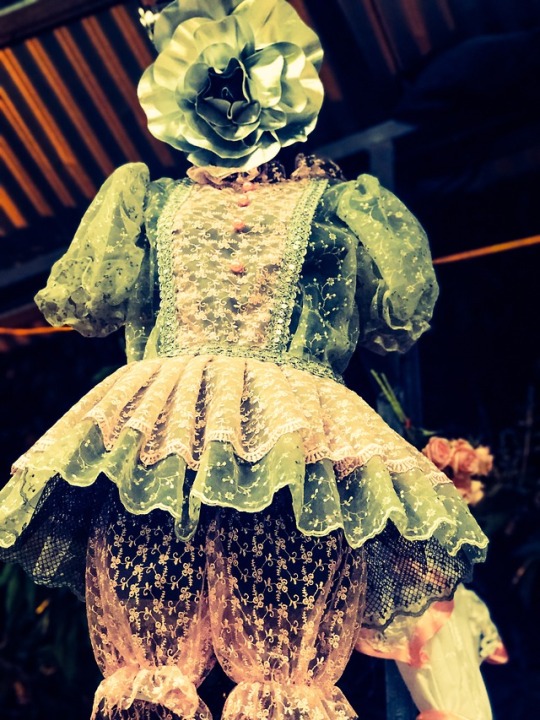
#BelmontBabyDolls collaborate with Berlin/Toronto artist, Shannon Lewis @lolas_venus (recently in residence at @aliceyardinsta) for its 2019 presentation “Carnival Baby” for Trinidad Carnival 2019.
The artist writes:
“In Get Me Bodied, shapeshifting is an adaptation. It is the work we do to be able to move between spaces, classes, and geographies. But what does that work — the constant reworking — do to our bodies or our minds? It is about the performance and the objects that we collect along the way. We primp, preen, fix up — look sharp, grow, develop appendages that are useful until they’re not. It is about mobility, intersecting with sexuality, gender, race, immigration, class, economics, and social climbing. “The task of a migrant is to learn the anatomy of a new society and reconstruct yourself in a new accommodating form. This framework and your performance in it are never invisible to you. So you either become flexible with the constant social contortions, or you fold over and break. The work sits in a space that contemplates the push and pull of this operation. It sits in a space that has fun with high femme performance fantasy and total exhaustion. Self-making as sport, for access and for life.” Shannon Lewis is a Canadian-born, Berlin-based artist with Trinidadian roots, whose practice encompasses painting, installation, and performance. She has exhibited in Canada, the United States, Britain, and Germany. She has a BA from OCADU in Toronto (2006) and an MFA from Goldsmiths, University of London (2014). Belmont Baby Dolls OPEN BOOK, with drawings and text by Amanda McIntyre.
#Trinidad#Carnival#Embodied Practice#Performance Art#Alice Yard#ShannonLewis#GetMeBodied#Mas#Theatre#Dance#Traditional Mas#Future Mas#Baby Doll#Process
0 notes
Link
The Dance & Performance Institute invites you join us for the 3rd iteration of the Carnival Performance Institute, with two-week and three-week sessions between 3 January and 3 March 2019 in Port of Spain, Trinidad. The dates of Trinidad & Tobago’s 2019 Carnival are 4-5th March. Guest artists, lecturers, professors, philosophers, mas women and men, designers, and cultural workers create an incredible resource for participants of every Carnival Performance Institute. Email [email protected]. Let's Dance!
0 notes
Photo
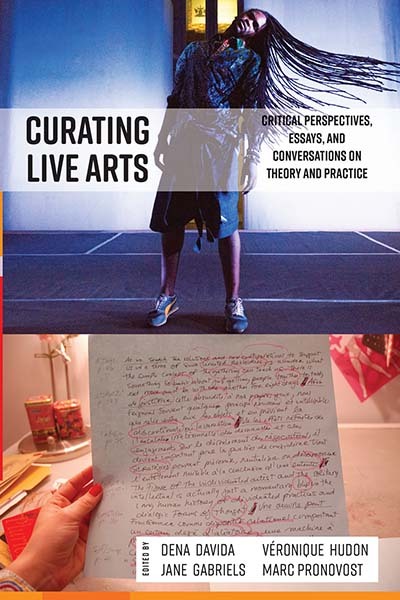
Davida, Dena., Gabriels, Jane., Hudon, Véronique., and Pronovost, Marc. “Making Stage: Dance & Performance Art Curation in Trinidad & Tobago” in Curating Live Arts: Global Perspectives, Envisioning Theory and Practice. Berghahn Books. 2018.
PUBLISHED! Chapter 18: “Making Stage: Contemporary Dance and Performance Curation in the Caribbean” by Institute Director, Makeda Thomas. The cover is an image by New Waves! SURFER, Sophie Bufton, taken during our 2015 Institute. Check out Mark Eastman in Cynthia Oliver — COCo Dance Theatre’s work. Thanks to Jane Gabriels for the invitation to contribute.
“This work is culled out of my work as a practicing dance artist and director of the Dance & Performance Institute. It is in this capacity, and in narrative form, that I will share how the presentations and commissions of the Institute: Santee Smith (of the Kahnyen’kehàka (Mohawk) Nation, Turtle Clan from Six Nations, Ontario), Trinidad’s Sonja Dumas/Continuum Dance Project, Ananya Dance Theater, and the Dancing While Black Performance Lab - all have engaged Caribbean artists and audiences in imagining new interdisciplinary models and frameworks for presenting contemporary dance work that centers on the Caribbean and its diasporas. Furthermore, I will write about how particular aesthetic frameworks have informed the curatorial practices of the Institute, and the role of the Institute’s curation in creating a dialogue between those works that realizes whole new possibilities in how the very region is defined.” - Makeda Thomas
0 notes
Text
NEW WAVES! MAS “Blue Blue”- a Processional Performance for the 2018 West Indian American Day Carnival
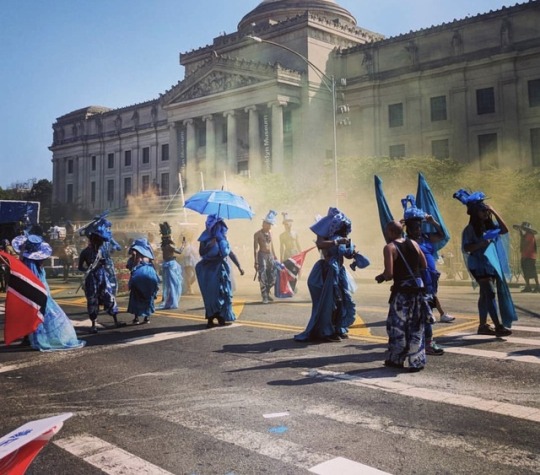
New Waves! MAS - “the dancer’s band” - presents “BLUE BLUE” - a Processional Performance for the 2018 West Indian American Day Carnival in Brooklyn, New York. Band Leader: Makeda Thomas. Designs by Tracey Sankar-Charleau, Sonja Dumas, and Jouvay Ayiti. In collaboration with Pagwah Mas. In Partnership with CaribBeing.
“Blue, Blue. God Loves You”
As a follow up to their prize-winning inaugural mas presentation, “Whitewash” (2017), New Waves! MAS presents “Blue Blue” for its 2018 Processional Performance on Monday, 3 September (Labor Day) on Eastern Parkway, as part of the West Indian American Day Carnival. Invoking the spirit and cultural significance of the color blue - blue blue, blue devil blue, blue soap blue - “Blue Blue” will feature five sections, three of which comes forth from Trinidad’s traditional Carnival: The Midnight Robber, the Dame Lorraine, and the Blue Devil (represented in Sankar-Charleau’s Fancy Jab). The fourth section is an “all-inclusive” general section that enables anyone to wear their own blue costume and join the band. Pagwah Mas “Spirit Warriors”, in a cloud of blue abeer, make up the fifth section.
“Bluuuuueeeeee - we go paint de town bluuuueee. Turn the whole world upside down.”
“We play “Blue, Blue” this year to represent the intuition, imagination, and wisdom of diasporic Caribbean people." Band Leader, Makeda Thomas, continues: “This is the heart of our work as a mas band - meaningful performance in procession, facilitated through the crafted work of Caribbean mas artists and designers (all of the costumes are made in Trinidad), thoughtfully presented to an audience of and in our community. This is our Performance Art." Performance in procession is one of the most dynamic aspects of New Waves! and offers embodied, experiential learning in Carnival aesthetics in its cultural and political forms, mas performance, and Caribbean dance and movement. New Waves! has engaged processional performance in its programming since 2011 - every year, with Jouvay Ayiti (and in 2014 with a New Orleans Second Line in Jacmel) for the Emancipation Day Procession through downtown Port of Spain, Trinidad.
New Waves! MAS thanks our partner, CARIBBEING and its Founder, Shelley Vidia Worrell; collaborators, Pagwah Mas and Dance Caribbean Collective; Isis Thomas, Shireen Dickson, Ilana Warner, Vaughn Charles, Natural Freaks, and Radical Women for their invaluable roles in making “Blue Blue” possible. Let’s Dance!
1 note
·
View note
Photo
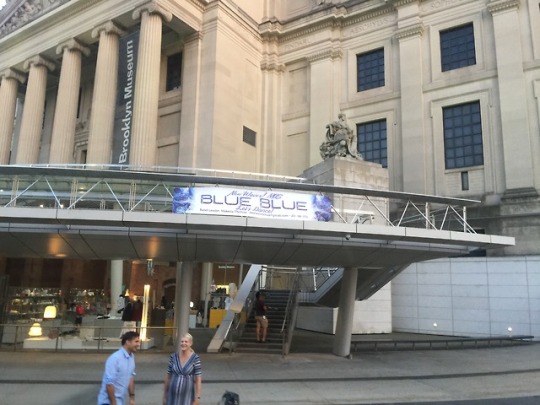
New Waves! MAS Pop-Up Mas Camp at CaribBEING House, Brooklyn Museum. New Waves! MAS: “Blue Blue” - a Processional Performance for Labor Day Carnival 2018. Band Leader: Makeda Thomas. Designs by Tracey Sankar-Charleau, Sonja Dumas, and Jouvay Ayiti. In Partnership with CARIBBEING. In collaboration with Pagwah Mas and Dance Caribbean Collective.
About the Band
New Waves! MAS 2018 Processional Performance presentation, “Blue Blue”, invokes the spiritual and cultural significance of the color blue - blue blue; blue devil blue; blue soap blue - in the Caribbean and throughout its diasporas. We play “Blue Blue” to represent the intuition, imagination and wisdom of diasporic people Caribbean people.
Section Notes
MIDNIGHT ROBBER
Derived from the West African Griot, the Midnight Robber’s “Talk” (a boastful, articulate, and rhyming catalog of the robber’s deeds, conquests, history, and various abilities that often approach the supernatural), whistle and wide-brimmed hat makes it one of the most recognized traditional carnival characters of Trinidad & Tobago. Robber Masqueraders often have a variety of skulls on their person, and have been known to carry weapons (knives, swords, and guns) and coffins. In all cases, Robbers use a shrill “scout” whistle to punctuate their speeches and command the attention of an audience. Designer: Tracey Sankar-Charleau. **This mas requires skull and bones makeup. Get creative!
DAME LORRAINE
Another highly recognizable traditional Carnival character, The Dame Lorraine is the product of the masquerade ball of the French Aristocracy of the 18th century. It is a parody of the ruling elite; performed by both male and female; and is a collection of characters with different maladies that the French were observed to have developed through their leisurely lifestyle: ‘Monsieur Gwo Koko’- a man with large testicles,“Madame Gwo Tete’- a woman with huge breasts, ‘Monsieur Gwo Buden’- a man with a big belly, etc. She is very aristocratic in her movements as she moves around. The dance of the Dame Lorraine may “vary from a dainty chip or to a contemporary lewd, all on the ground jamette wine - keeping respectability in tact through wearing a mask. Designer: Tracey Sankar-Charleau. **This mas requires that your entire face be covered. No makeup required! You WILL be able to breathe.
BLUE DEVIL/FANCY JAB
Fancy Jab, a “new” Traditional mas character by Trinidad’s Tracey-Sankar Charleau; a cross of two characters…The ‘tory is: A wicked blue devil fell in love with the buxom Dame Lorraine. Every Carnival he would peep and look for she, but she would run away from him. Dames doh mix with lower class people! One night, he tief her and covered her face so that she wouldn’t know it was him…and they made love…Months later, she gave birth…to the Fancy Jab. Designer: Tracey Sankar-Charleau.**This mas requires skull and bones makeup and blue body paint/spray/glitter. Get creative!
BETWEEN THE BLUE BEVIL AND THE DEEP BLUE SEA, WILL I FIND YOU OR WILL YOU FIND ME?
The riddle-like title plays on the traditional metaphor of facing a dilemma-filled choice (“between the devil and the deep blue sea”) and references two iconic features of my Caribbean space – the traditional blue devil masquerade in Trinidad and Tobago, originating from the Paramin hills of North Trinidad at Carnival time, and the Caribbean Sea, which surrounds the island-nations of the region. Designer: Sonja Dumas @Jouvay Ayiti
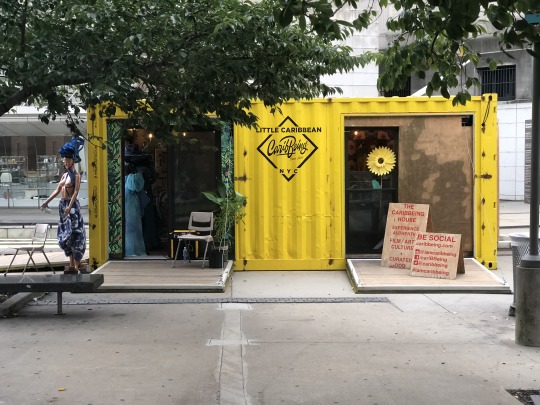
CARIBBEING is a hub for creativity and collaborations with some of the Caribbean’s most visionary talent and innovative brands. We are a thriving cultural platform that stands at the crossroads of culture + art + film. From its humble beginnings, CARIBBEING has grown into an award-winning brand with partnerships that span the globe. Today, CARIBBEING’s commitment remains: to deliver thought-provoking, culturally relevant content and experiences to individuals who crave Caribbean inspiration. (caribBEING website).
ON-SITE MAS REGISTRATION for “Blue Blue” begins on Wednesday, 29 August! Join us from 11am-6pm on Wed., and 11am-10pm on Thursday thru Saturday. Come down for a lime, see costumes live, make mas, learn more and support the band!
To REGISTER for “Blue Blue”, go to https://form.jotform.co/82138129984870 or join us at our CaribBEING House Mas Camp at The Brooklyn Museum on Eastern Parkway. Email [email protected] or call (201) 749-1774 for more info. Let’s Dance!
0 notes
